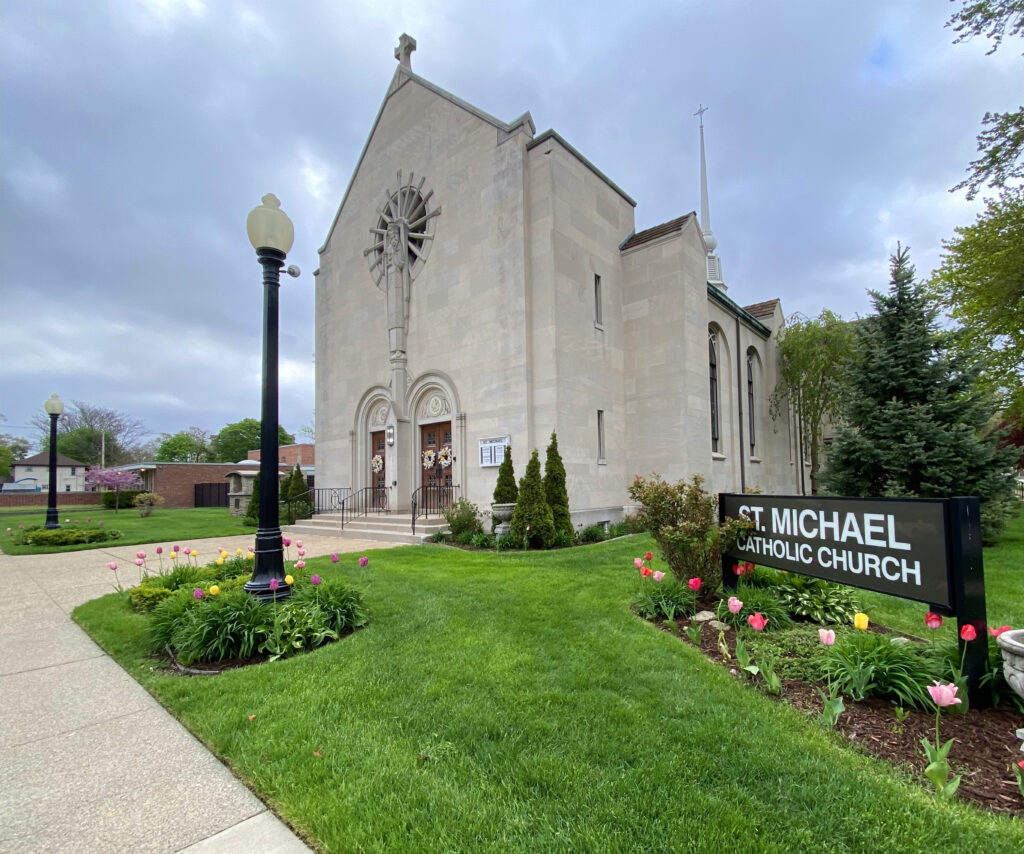
Early History
The vibrant history of the Polish American community in Muskegon revolves around St. Michael the Archangel Parish, established in 1909 and now the second oldest active Roman Catholic parish in Muskegon.
While Poles began settling on the Muskegon Lake shoreline during the 1800s, their numbers were small compared to the Irish, German, and French immigrants who preceded them and established St. Mary’s (1857), St. Joseph’s (1883), and St. Jean de Baptiste (1887) parishes, respectfully. The tide, however, began to change in the early 1990s when Muskegon business leaders successfully ushered a major economic transition from lumbering to industry. As the foundries and factories swelled, so did the need for hardworking and skilled workers to fill the ranks.
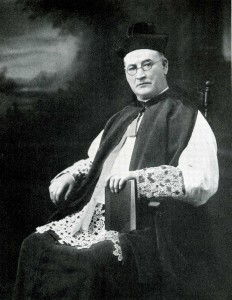
Meanwhile, across the Atlantic, the proud Polish people, whose beloved homeland had been tragically divided by Russia, Germany and Austria, longed for the American ideals of freedom and independence. They immigrated to the U.S. by the tens of thousands through Ellis Island and Canada. Some found their way to Muskegon. Word of mouth about employment opportunities spread to other family members both in Poland and living elsewhere in America. Their increasing numbers and their desire to form a parish in Muskegon found a receptive advocate in Right Rev. Monsignor Casimir Skory at St. Adalbert Church in Grand Rapids. He worked with Bishop Henry Joseph Richter to establish St. Michael the Archangel Parish in 1909, but one that still lacked its own church.
In the interim, Rev. Francis Piaskowski offered masses in Polish at the other Muskegon churches. Rev. Andrew Narloch was appointed the first resident pastor of St. Michael the Archangel. In 1910, he purchased land in the heart of Muskegon’s Polish American enclave for the new church. Two years later, the resourceful and devout Poles laid the cornerstone for a combination second floor church and first floor school, where classes were taught by the Sisters of Mercy. Within five years, a rectory was built and, five years later, a convent was constructed.
St. Michael the Archangel claimed parishioners from every county of the Republic of Poland, which was re-established after World War I, as well as from Slovak, Lithuanian, Ukrainian and Czech families. The parishioners’ own homes, while modest, prominently featured crucifixes and religious pictures. For the Poles, old country religious customs, such as Koledy, Oplatki, Gorzkie Zale, and Swieconka, were brought to the New World, along with their resolute devotion to the rosary and the saints.
St. Michael’s School and Parish Grow Quickly
The Poles strongly believed in education for their children. The burgeoning numbers at St. Michael’s School forced classes to be expanded to the building’s basement and to the vacated Polish Roman Catholic Union’s (PRCU) Kosciusko Hall near the school. In 1925, a six-classroom temporary structure was added to the school. By the 1928-29 academic year, St. Michael’s School had 470 students.
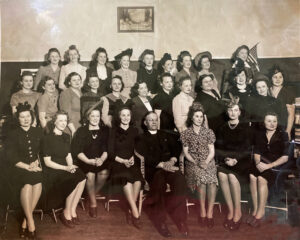
The Depression took its toll on the planning efforts for a new church. Helping to keep the dream alive were Polish American clubs and circles. Many of these raised funds for the proposed church. The PRCU, which started in Bay City before moving to Chicago, was the most prominent locally with its Muskegon roots dating back to 1891. An auxiliary lodge, St. Mary Magdalen Lodge #1283, was created. The Polish National Alliance Lodge #1371, the Polish Falcons Nest #276 and the Polish Falcons Auxiliary Nest #883 would be added over the ensuing years.
During World War I, Rev. Narloch headed a volunteer committee to enlist local young men to fight in the Polish and Czech legions. A Polish War Veterans Post #146 was established in Muskegon. The names of those who served can be found today listed on a tablet at the Veterans Memorial Causeway Park.
The first organization within the parish, the Rosary Society, was founded in 1912 and still exists. St. Michael’s Choir was formed and led the drive to purchase an organ for the new church. The Sisters of Mercy established and headed several youth organizations – Children of Mary, the St. Stanislaw Society, the Altar Boys Society, and the Young Ladies Sodality. Meanwhile, the Mothers Club of St. Michael’s promoted welfare activities within the parish while assisting in school recreational activities. The club finished the school library and playground equipment.
Unlike other parishes with stated boundaries, St. Michael’s was charged for many years with serving Polish-speaking rural missions in Eldridge, MI, and Rothbury, MI.
Erecting Muskegon’s First Consecrated Roman Catholic Church
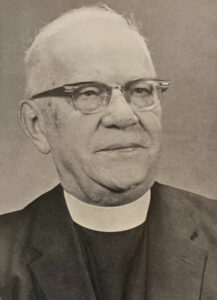
In 1938, Rev. Andrew Sikorski, a Grand Rapids native, was appointed to replace Rev. Narloch. Over the next 34 years, his name would become synonymous with St. Michael’s as its longest-serving pastor. His first challenge was the construction of a new church.
Completed in 1943, the majestic house of worship, aguably the most beautiful in Muskegon, was, in the words of its architect, Edward J. Schultz, “conceived and built to last for centuries.†The massive figure of patron Saint Michael the Archangel carved in the Indiana limestone exterior greets those entering the main doors. The circular rose-stained glass window above the choir loft evokes images of Europe’s great cathedrals. Inside, the striated St. Meinrad limestone walls, the colored stained-glass windows, the meticulously painted oak rafters, and the painstaking detail to religious symbolism in statues and artwork fulfill Schultz’s intent of “a noble way of honoring God and a material symbol of our love and veneration for Him.â€
Most notably, St. Michael the Archangel became Muskegon’s first consecrated Roman Catholic church on May 31, 1944. This special blessing requires that the church be debt free and not be built of wood, iron or other metal. As a permanent sign of the consecration of a church, 12 crosses, usually cut into slabs of marble, are affixed seven-and-a-half feet above the floor. They are never to be removed. Inside St. Michael’s, these crosses are carved into the stone walls and are marked by a vigil light in a silver holder.
A New School Becomes Hub of Parish ActivitiesÂ
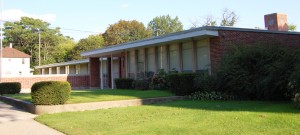
In 1959, the much-anticipated new St. Michael’s School was completed and became the hub of parish activities. The school featured eight classrooms, a library, an office, a full kitchen, and a gymnasium. As the only local Catholic grade school with its own dedicated gymnasium, St. Michael’s became the host site of an annual basketball tournament with teams from St. Mary’s, St. Jean’s, St. Joseph’s, Sacred Heart, St. Francis de Sales, St. Catherine in Ravenna and St. Michael’s in Denison.
St. Michael Parish operated the school until it was given to the Greater Muskegon Catholic School System as part of its consolidation of many of the parish schools. In 2006, the school closed due to declining enrollment and ownership was returned to the parish. Today, the building houses pre-school classes, while other classrooms have been beautifully remodeled for use as the St. Michael Family Center.
Over its nearly 100 years of existence, St. Michael’s School alumni could be found excelling in every professional field, proudly serving their country in every military branch, and working in the countless small and large businesses and industries that built and sustained Muskegon and, in turn, powered the nation. The school has also produced several priests and religious nuns.
St. Michael’s Alumnus, Edmund Cardinal Szoka, Becomes President of the Vatican State
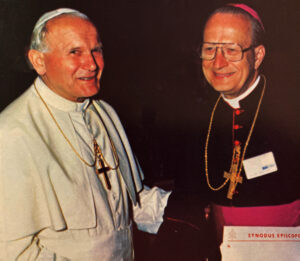
On a global scale, St. Michael’s most famous graduate is the late Edmund Casimir Cardinal Szoka. Named the first Bishop of the Diocese of Gaylord in 1971, he became Archbishop of Detroit a decade later. His longtime and close friendship with Pope John Paul II led to the pope coming to Detroit’s Silverdome for a 1987 visit. Szoka was named a Cardinal the following year. Pope John Paul II brought him to Rome to oversee Vatican finances and then, as President of the Vatican State, to lead all internal operations of one of the world’s smallest nation states. Szoka coordinated the Vatican details for the pilgrimage of millions to Rome for Pope John Paul II’s funeral.
In 1966, St. Michael’s Parish held special events in conjunction with the celebration of  Poland’s 1,000-year anniversary of Christianity.
Parish Served by Exceptional Priests and Nuns
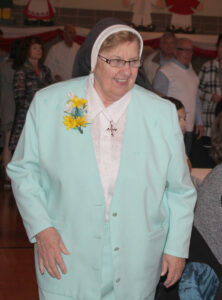
In 1972, beloved pastor Rev. Sikorski retired. Shortly after, the Muskegon Catholic Central Sikorski Field was built and dedicated in honor of the one-time semipro baseball player. Since then, St. Michael’s parishioners have been faithfully served by several pastors and administrators: Rev. Edward J Bielskas (1972), Rev. Eugene S. Golas (1982), Rev. Thomas J. Hack (1988), Rev. Mark Bauer (2002) and Rev. James Wyse (2002), Rev. Thomas J. Brown (2007), Rev. Phillip P. Salmonowicz (2010), Rev. Charlie Hall (2016) and Rev. Steven Geerling (2023).
For more than half a century, associate pastors had assisted with the priestly duties while the Sisters of Mercy taught at the school until 1972. None served the parish longer than Gaylord, MI native Sister Agnes Mary Wojtkowiak, who retired in 2023 after 40 years at St. Michael’s.
In 1982, a historical bell was erected near the church entrance to commemorate the living and deceased members of the parish on its 75th anniversary.
In 1999, St. Michael’s Divine Mercy Chapel – the first perpetual Adoration Chapel in Muskegon – opened its doors in a building across the street from the church.
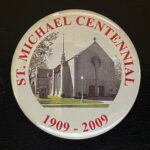
Legacy of Early Polish Immigrants
Today, St. Michael’s parishioners represent a wide array of ethnic backgrounds. Visitors can still hear Polish hymns and lamentations during special masses and celebrations throughout the year. Baskets are still blessed at Easter and sumptuous Polish food served at events in the Family Center. Most certainly, the many names of the generous donors from the 1940s etched into the church’s magnificent stained-glass windows will always keep St. Michael’s a “Polish parish.â€
But the ultimate legacy of Muskegon’s hard-working and pious Polish immigrants and their descendants remains their unwavering faith, commitment and foresight to build and financially secure St. Michael the Archangel Parish as a welcoming place for all Catholics to worship God for generations to come.
